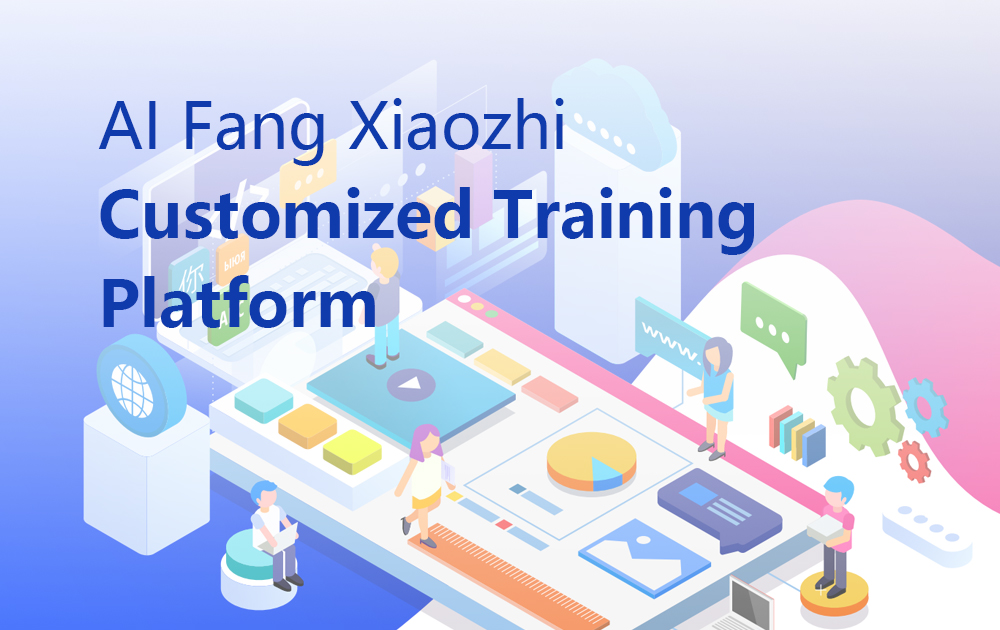‹
AI Fang Xiaozhi Launches Custom Training Platform
Recently, AI Fang Xiaozhi did a feature update and product iteration, adding a functional platform for custom training models based on the previous issue. This means that users can upload files on their own, train them into a model, and guide the computer to perform relevant tasks based on the model. This gives users who program with AI Fang Xiaozhi more possibilities and a greater scope of involvement.

AI Fang Xiaozhi - Artificial Intelligence Visual Programming Platform is an artificial intelligence programming system designed for youth programming education launched by Adjacentech and Microsoft. Based on a graphical online programming platform, combined with Microsoft Azure AI cognitive services, it enables zero-threshold AI visual programming teaching and hands-on experiments.

Based on the first release version of AI Fang Xiaozhi, this update mainly adds a platform for custom training models in the background. The custom training platform can upload file resources to the server for the programming module to call; at the same time, it can upload images, text, audio, and knowledge map documents, and train each file into a specific model using custom machine learning techniques, and after training into a model and releasing it, it can be used in the programming window After the model is trained and published, it can be called by the module in the programming window. The platform mainly uses custom image recognition, custom speech synthesis, custom machine learning and other AI technologies to increase the breadth and width of user programming. For example, the computer is first made to learn what a banana looks like, and once the computer learns it, it will recognize the banana the next time it encounters it. This AI technology application has a particularly obvious utility in factories, where unfamiliar operators need to use AI recognition technology to determine whether the correct parts and tools are being used due to the variety and complexity of tool parts. AI Fang Xiaozhi gives good ideas for this scenario through custom training models and modular programming. The content of this update is closer to the user scenario based on the first phase of the R&D course, which has increased in difficulty and also makes programming more relevant to today's daily life.



Visual Training
Visual training mainly applies artificial intelligence custom image recognition technology to upload groups of images with the same image content or object and train them into image training models for that specific object. After the model is trained, the object can be recognized in other images through module calls and custom image recognition techniques. Visual training can be used in a celebrity recognition scenario by building a picture model of each celebrity so that the computer recognizes the face of a celebrity, and then that celebrity can be recognized in the network environment.
Voice Training
Speech training mainly applies artificial intelligence custom speech synthesis technology, uploading multiple audio files of the same person speaking and then training them into a speech training model of that person. After the model is trained, through the module call and custom speech synthesis technology, any text can be read aloud with the person's voice, which makes the machine speak more closely to the real person. The voice training can be used in the scenario of intelligent anchor. By voice training and inputting the document information of the broadcast, it allows the intelligent anchor to complete the program recording as required and greatly reduces the chance of making mistakes.
Semantic training
Semantic training mainly applies artificial intelligence custom machine learning intelligence techniques to give meaning to one or more paragraphs of textual content to a computer to achieve human-machine communication through semantic training. Semantic training applications are mostly used in intelligent assistants and robots so that these digital beings can communicate directly with humans.
Knowledge Graph
Knowledge Graph mainly uploads specific document information. The document has numerous objects, and each object has multiple feature data, which can be trained by the Knowledge Graph model to generate a graph of this document information, and the information and relationship network of one of the objects can be queried by calling this graph through the module.


